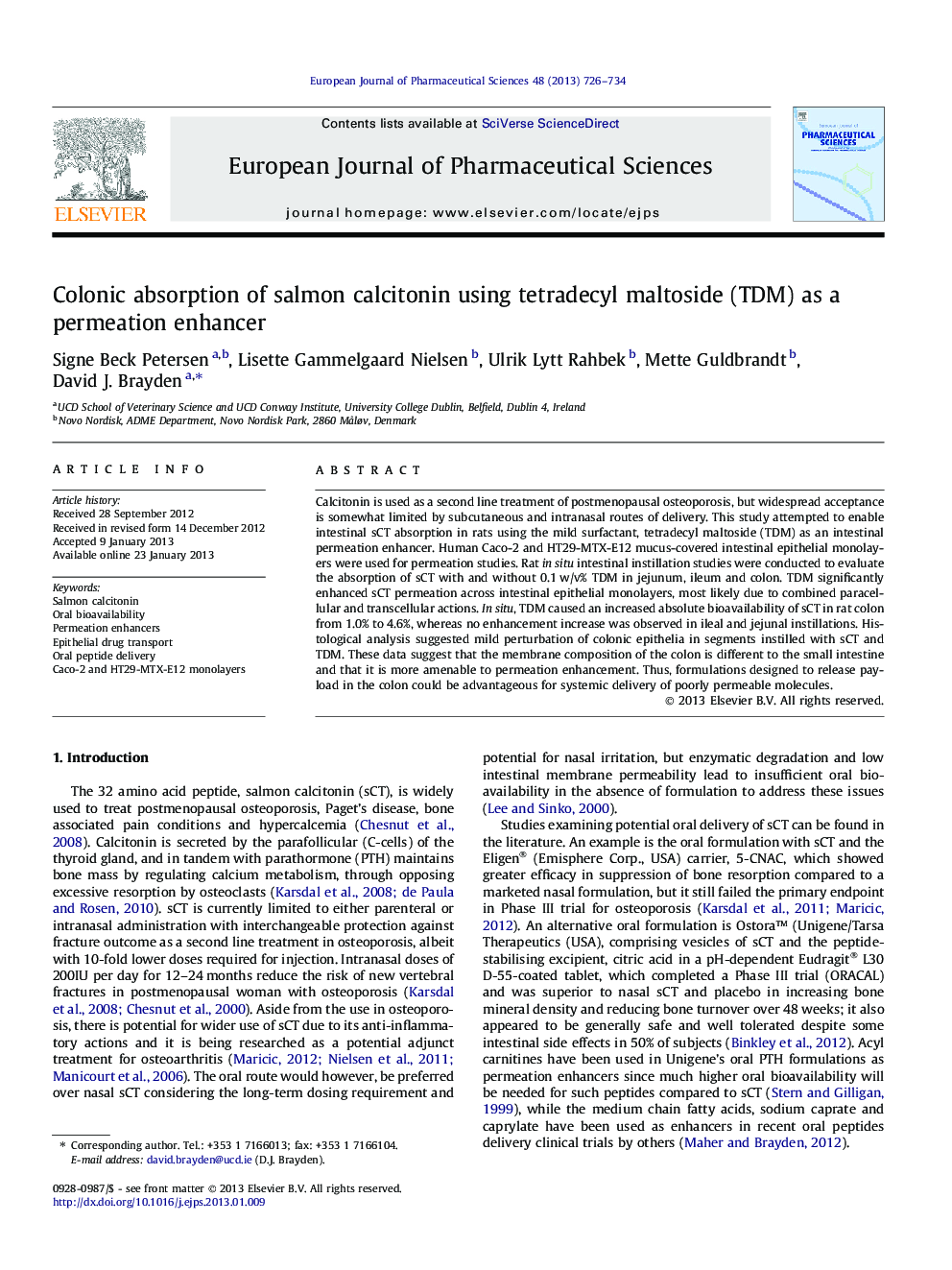| Article ID | Journal | Published Year | Pages | File Type |
|---|---|---|---|---|
| 2480895 | European Journal of Pharmaceutical Sciences | 2013 | 9 Pages |
Calcitonin is used as a second line treatment of postmenopausal osteoporosis, but widespread acceptance is somewhat limited by subcutaneous and intranasal routes of delivery. This study attempted to enable intestinal sCT absorption in rats using the mild surfactant, tetradecyl maltoside (TDM) as an intestinal permeation enhancer. Human Caco-2 and HT29-MTX-E12 mucus-covered intestinal epithelial monolayers were used for permeation studies. Rat in situ intestinal instillation studies were conducted to evaluate the absorption of sCT with and without 0.1 w/v% TDM in jejunum, ileum and colon. TDM significantly enhanced sCT permeation across intestinal epithelial monolayers, most likely due to combined paracellular and transcellular actions. In situ, TDM caused an increased absolute bioavailability of sCT in rat colon from 1.0% to 4.6%, whereas no enhancement increase was observed in ileal and jejunal instillations. Histological analysis suggested mild perturbation of colonic epithelia in segments instilled with sCT and TDM. These data suggest that the membrane composition of the colon is different to the small intestine and that it is more amenable to permeation enhancement. Thus, formulations designed to release payload in the colon could be advantageous for systemic delivery of poorly permeable molecules.
Graphical abstractTetradecyl maltoside (TDM) increases serum concentrations of salmon calcitonin (sCT) following rat colonic instillations in vivo (○) sCT solution, (●) sCT with 0.1 w/v% TDMFigure optionsDownload full-size imageDownload high-quality image (65 K)Download as PowerPoint slide
